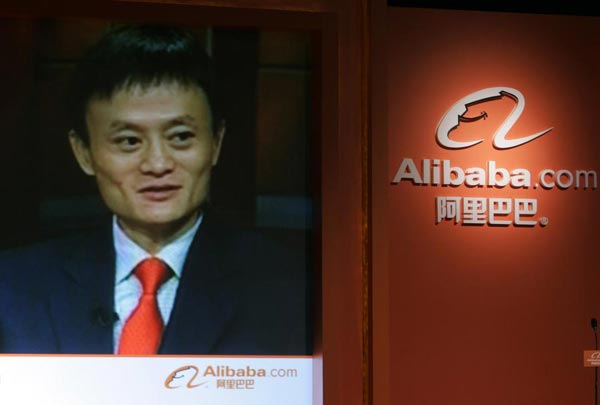M&A the Chinese Way: Buying First and Paying Later — Financial Times
–
For these two, as well as companies wishing to find a buyer in China, the game now is to learn the new rules of China M&A and then learn to use them to one’s advantage.
Chinese companies mainly pursue M&A for the same reasons others do – to improve margins, gain efficiencies and please investors. The main difference, and it’s a striking one, is that in most cases domestic Chinese corporate buyers, especially the publicly-quoted ones who are most active now trying to do deals, have no money to buy another business.
Outside of China, there are three known ways to pay for an acquisition – with cash, borrowed money, or shares. All three are generally between excruciatingly slow and impossible for publicly-listed Chinese companies. The reason: companies’ retained earnings are just about always insufficient.
Banking and securities rules in China severely restrict the way publicly-traded companies in China can finance acquisitions using debt or by issuing new shares. Deals financed with leverage are basically forbidden. So, Chinese companies have invented two convoluted ways to get M&A done. They display a certain genius. Both involve trying to buy first and pay later.
Method One is for the acquirer to first negotiate a purchase then ask the Chinese stock market to suspend trading in its own shares. The acquirer will announce the deal publicly and if all goes to plan its share price will surge, often by as much as 50 per cent to 75 per cent.
This predictable outcome is the result of the fact almost all shares quoted in China are owned by small retail investors, commonly called Chinese brokers “old grandpas and grandmasâ€. Most have never cared to look at a company’s financials or studied its competitive position. Instead, they trade in and out of stocks depending mainly on rumor and hype fed to them by brokers or online tip sheets.
In China, an announced M&A deal is now always a market-moving event. The movement tends to be all in one direction. Up.
Once trading in the acquirer’s shares resumes and the price duly jumps up, the acquirer then initiates the laborious process of applying to the Chinese securities regulator, the China Securities Regulatory Commission (CSRC), for permission to do a secondary share offering.
This will then, it’s hoped, yield the cash to complete the acquisition. The approval process will generally take six months or longer. Chinese securities rules are cumbersome and mandate that the new shares be issued at a discount to the share price at the time of application.
The result: the sequence of “announce first, then apply†means the acquirer can raise the cash needed to buy the target on more favorable terms for the acquiring company, lowering the amount of dilution.
Method Two, a close cousin, is to persuade a friendly domestic investment fund to buy the target company then hold onto it for as long as it takes the intended final owner to get the money in place through the secondary offering. In other jurisdictions, this might be deemed a “concert party†and so likely to land everyone in jail. In China, it’s becoming common practice.
In fact, a new form of investment fund has come into being especially to do deals like this. They call themselves “市值管ç†åŸºé‡‘†which you can translate as “market cap management fundsâ€. They exist to help publicly-traded companies do M&A deals that will lift the company’s share price, and not much else.
They make money buying and selling shares, as well as marking up for resale companies they buy on behalf of publicly-traded companies. They are not buyout funds as understood elsewhere, since these market cap management funds are buying on behalf of a specific company and have no particular industry expertise or experience managing an acquired company. They act purely as a temporary custodian.
Most often, the acquirer will contribute a small amount of limited partner capital to the “market cap management fund†as a way to bind the two organisations together. It can take a year or more from when the market cap management fund first buys the target company then sells to the publicly-traded acquirer, and from there, several more years before this acquisition starts to have an impact, if any, on the acquiring company’s earnings. In other words, a very long timetable.
That by itself is not a problem for the acquirer, since it is as eager to give a shot of adrenalin to its own share price and maintain it on this higher plane as it is to get control of the target company and integrate it into its business. Market cap management trumps industrial logic as a reason to pursue M&A.
I’ve yet to see evidence of much skepticism from Chinese stock market investors that an announced M&A deal may not benefit the acquirer. In the US and other more developed capital markets, it’s frequently the opposite. An acquiring company will as often as not see its shares fall when it announces plans for a takeover. That’s because in most cases, as far as hard empirical evidence can determine, the main beneficiaries of any M&A deal are the target company’s shareholders. Too often, for acquirers M&A deals prove to be too expensive and synergies elusive.
We’ve been invited by domestic listed companies in China to help consult on M&A deals where “market cap management†was an explicit purpose. Finding an attractive target is also a consideration, but a somewhat secondary one.
The discussions, in the main, are unlike anywhere else where M&A deals are being planned and executed. They revolve around how to get the money together, when and for how long to halt share trading, and by how much the listed company’s shares will likely go up, and stay up, once the M&A announcement is made.
Where the publicly-listed company has private sector, rather than State-owned enterprise background, the chairman will usually be the largest single shareholder. The chairman’s net worth stands to get the biggest boost if market cap management works as planned.
Opportunities for global buyout funds
The lengthy, roundabout nature of Chinese M&A is creating attractive opportunities for global corporations and buyout firms. They are the only participants in the M&A arena in China both with cash in hand or easily accessed to close deals and the experience to manage a company well once it’s bought.
From the perspective of potential Chinese sellers, both of these are extremely valuable, since they remove much of the uncertainty in agreeing to sell to a domestic acquirer. Global corporates and buyout firms will thus often be buyers of first choice for sellers.
For now, few global corporates and buyout firms are busy closing M&A deals in China. There are a host of reasons, including China’s slowing economic growth, the perception China is becoming more hostile towards foreign investment, the difficulty persuading owners of better Chinese companies to give up majority control. All valid concerns. But, there are larger forces now at work that make it attractive to expand through acquisition in the world’s largest fast-growing market.
First, in almost all industrial and service industries, China is beginning at last a process of rationalisation and consolidation. Costs are rising quickly, especially for labor, energy and debt service. These are applying vice-like pressure on margins. Markets for most products and services in China are no longer growing by +25 per cent a year and suffer from overcapacity.
Scale, efficiency, quality, modern management are the only ways to combat the punishing margin pressure. This plays directly to the strengths of larger global corporations and buyout firms. They know how to do this, how to transform a capable smaller business into a large market-share leader.
It’s something of a well-kept secret, but some of the world’s most successful M&A deals have seen large global corporations buying private sector businesses in China. The successful buyers generally prefer it this way, that few know how well they are doing after buying and upgrading a Chinese domestic company.
Why tip off competitors? For every well-publicized horror story there are at least three quiet successes. Indeed, one can find within a single Fortune 500 company three great examples of how to do domestic M&A well in China, and achieve a big payoff. The company is Swiss food giant Nestle.
They first opened an office in China in 1908. The big transformation began a hundred years later, in 1998, when they decided to buy an 80 per cent ownership in a Chinese powdered bullion company Taitaile. That company is now more than twelve times the size it was when Nestle bought in.
They followed that up with two other large acquisitions of domestic Chinese food and beverage brands, drinks company Yinlu and candy brand Hsu Fu Chi. In all cases, Nestle bought majority control, but not 100 per cent. They kept the founder in place, as CEO and a minority owner.
That has proved a brilliant model for successful M&A in China, and not only at Nestle. When discussing with Chinese business owners the advantages of selling control to a capable global company, we often share details of Nestle’s M&A activity in China, including the fact that the Chinese owner stays but gets to spend Nestle’s money, leverage its resources, to build a giant business. That’s a pretty attractive proposition.
All three acquisitions have thrived under Nestle’s ownership and now enjoy significant market shares. Thanks largely to these acquisitions, China is Nestle’s second-largest market overall. It was number seven just four years ago.
From my discussions with the China M&A team at Nestle, they are frank that it’s not always been smooth sailing. The M&A deals all involved trying to blend one of the world’s most fastidious, slow-moving and more bureaucratic cultures with the free-wheeling, “ready, fire, aim†style common to all Chinese domestic entrepreneurs. Corporate culture gaps could not get any wider. And yet, it’s worked out well, better in fact than Nestle hoped when going in.
Nestle tells us it is hungry to do more acquisitions in China. Chinese still spend half as much on food per capita as Mexicans. That’s where the growth will come from. Market dynamics in China are also moving strongly in Nestle’s favor, as food quality and safety become paramount concerns. Further acquisitions should help Nestle gather in billions more in revenue in China along with higher market shares.
Across multiple industries, the circumstances are similar in China, and so favor smart, bold acquirers. Choose good targets, buy them at a good price, convert great entrepreneurs to great managers and partners, don’t script everything from your far-off global headquarters. Do these right and M&A can work in China. No market cap management required.
(Originally published Financial Times BeyondBrics)
http://blogs.ft.com/beyond-brics/2015/05/08/ma-the-chinese-way-buying-first-and-paying-later/
http://www.chinafirstcapital.com/en/FT.pdf
–






















